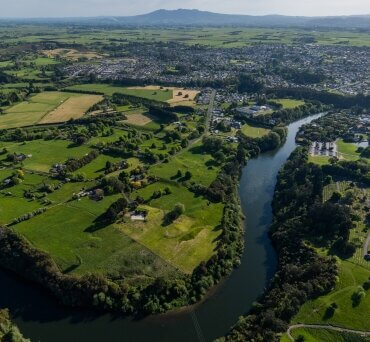
Waikato River.
Plan Change One (PC1), Waikato Regional Council’s proposed regulatory framework to better manage freshwater in the Waikato and Waipa river catchments has finally reached the Environment Court hearing stage.
This is the final part of the process where the formal appeals to the proposed plan are heard by an Environment Court judge who will make a final decision on the parts of the plan that are still in contention following court assisted mediation.
Work and engagement with the community to develop policy options for both the Waikato Regional Policy Statement and Waikato Regional Plan to give effect to the National Policy Statement Freshwater continues, with the process on track to notify the proposed plan in December 2024.
For those farming in the Waikato and Waipa catchments, the regional council will be doing its best to align this process with the outcomes of PC1 to ensure as far as possible a practicable and functional set of new plan rules that make sense for farmers. Don’t forget that the Fresh Water Farm Plan regulations are a seperate but related part of the Governments Freshwater Initiatives that require all pastoral or arable land use of more than 20 hectares and/or horticultural land use of more than 5ha to have a certified Freshwater Farm Plan (FW-FP).
For those in the Waipa catchment, these plans need to be submitted by February 2025 to a certifier for signoff. Other parts of the region have different compliance dates.
The new proposed Waikato Regional Coastal Plan is open for submissions. The Coastal Plan sets out the objectives, policies, rules and methods that WRC plan to use to manage activities in the Coastal Marine area.
The current operative Coastal Plan is nearly 30 years old, so this new one has a number of proposed changes. The plan covers things such as protection of areas of significant indigenous biodiversity, provisions for where aquaculture and other commercial growth can take place, rules around new development and structures in the Coastal Marine area and how we should be managing all this stuff in an environment of climate change and rising sea levels.
The proposed plan is a substantial document, however there is a summary document that outlines key changes, and provides guidance for those who have interests in particular areas of the plans scope. The proposed Coastal Plan does have policies that relate to the protection and enhancement of indigenous biodiversity values in the Coastal Marine area (similar to how we manage terrestrial indigenous biodiversity), however it’s important to understand that responsibility for fisheries management rests with the Ministry for Primary Industries.
The area that the Coastal Plan applies to is the “wet” part of the sea from the mean high tide mark out to the 12 nautical mile (20km) limit. Anyone can make a submission.
Submissions close on Tuesday 14 October.









